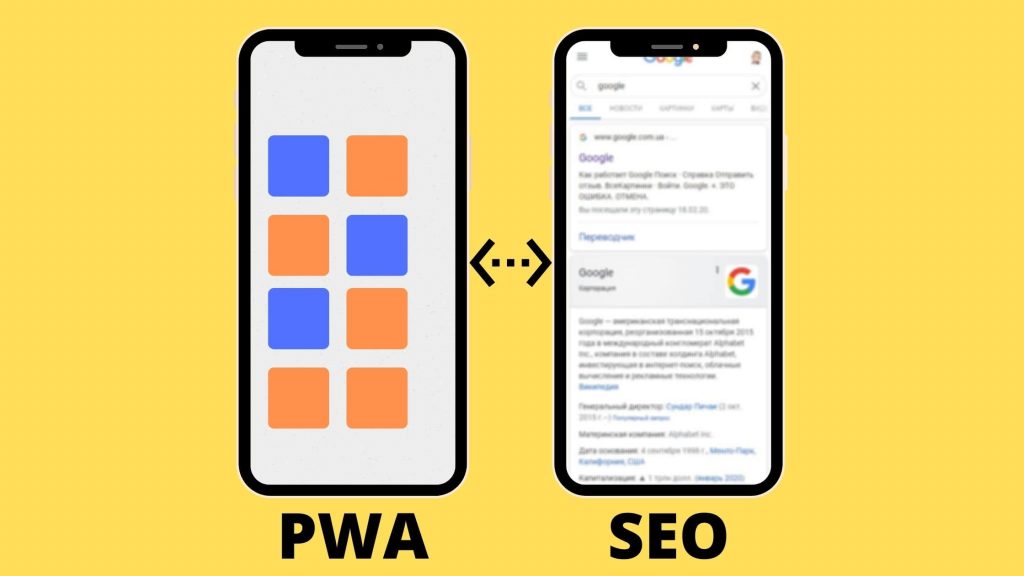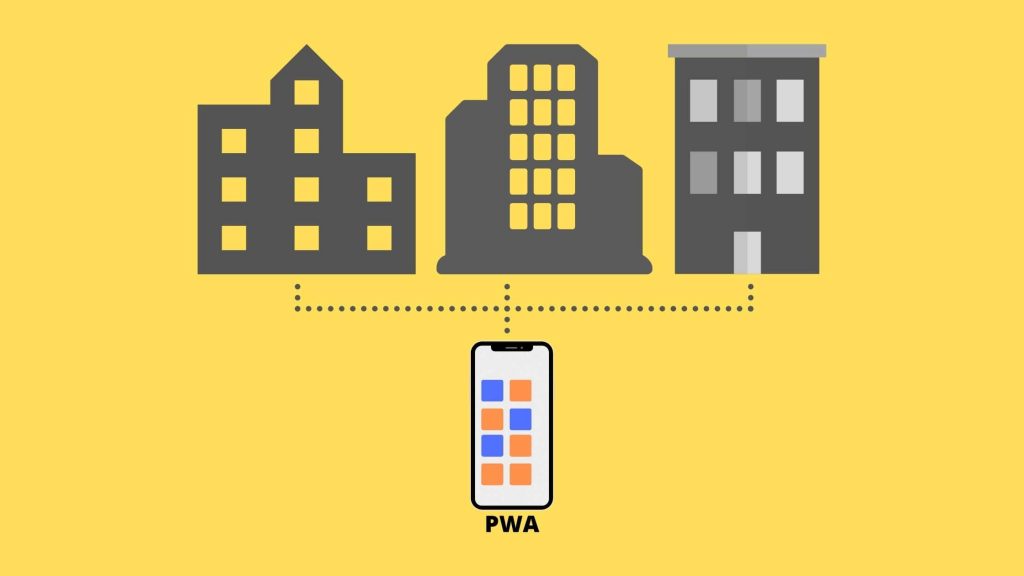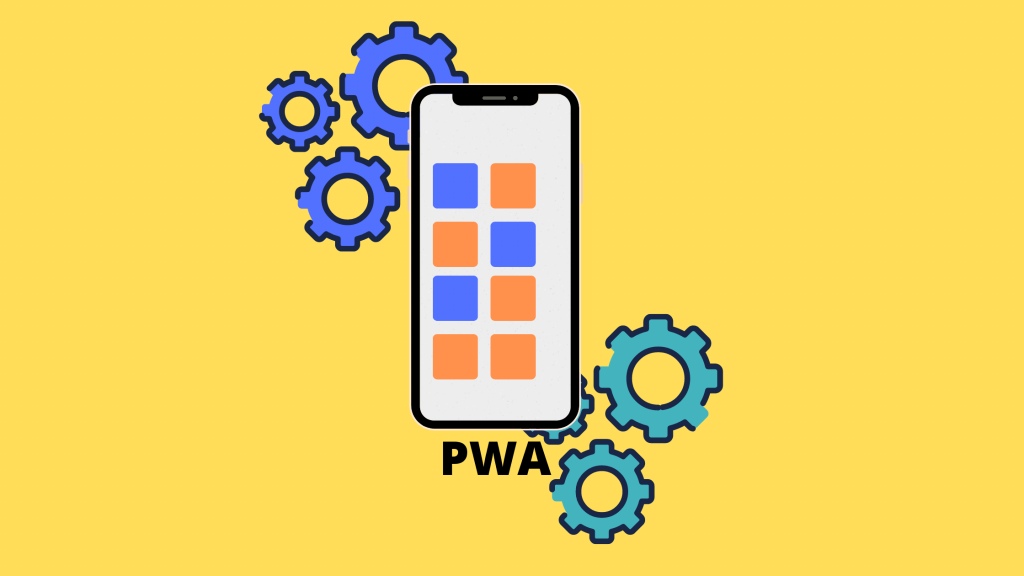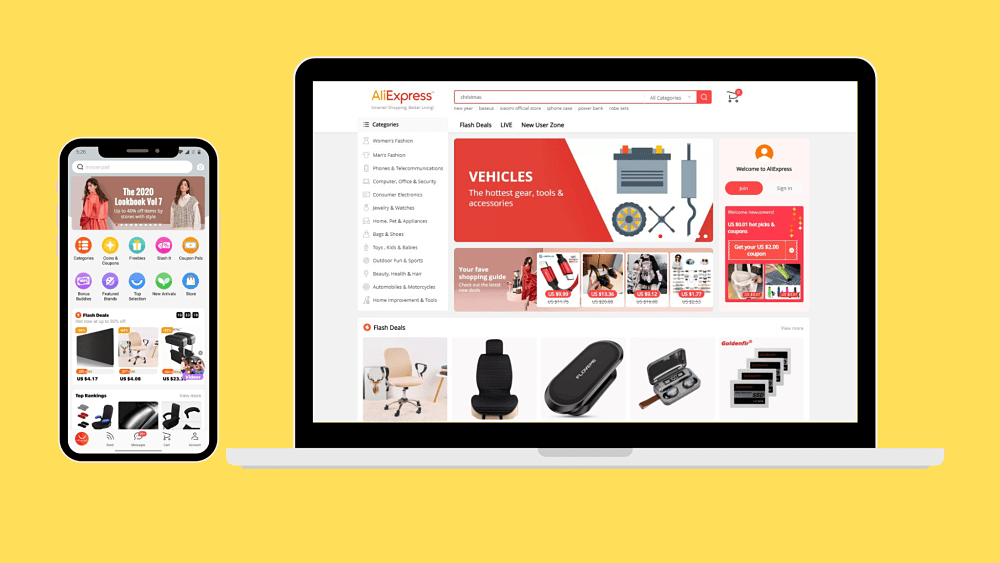Progressive Web Apps (PWA) are the best of both worlds: they function as a native mobile application while still performing like a responsive website. Push messages, the ability to work offline and Internet hosting are all core benefits.
Since the introduction of Progressive Web Apps (PWA), many companies have used this technology to their advantage. They may deliver remarkably appealing & engaging user experiences, meanwhile winning new users.
PWAs are the next big thing in today's time, especially for ecommerce mobile innovation. They are taking over native applications by storm and revolutionizing them into more accessible and convenient solutions for digital needs as they combine the best of two worlds (traditional website and mobile application)
Steve Jobs originally introduced a web app in 2007, but it was formally invented as a “Progressive Web Application” by Google in 2015 when they released basic PWA standards. PWA has already started rolling in the mobile world and we have seen some prominent examples like Pinterest and Twitter. However, many old-school company leaders are still not entirely aware of PWA as a web development technology and its benefits.
If you want to outpace the competition, it makes sense to create beneficial PWAs that can increase the engagement of users. In 2021, companies are focused not only on the advantages of developing PWAs but also they look at the resources needed to build these web apps.
What we need to know about Progressive Web Apps?
- Progressive Web app - what is it?
- Benefits of PWA over mobile apps
- PWAs features
- Numerous firms are leveraging with PWA technology
- Common tool kit for PWA development
- Examples of PWAs
- Technical components of a PWA - what are they?
- Are PWAs the wave of the future?
1. Progressive Web App - what is it?
Progressive Web App is a hybrid of a mobile application and a traditional website that incorporates top features of both. It is a website developed using web technologies but offers the convenience of a mobile application.
According to Alex Russell, Google's senior software engineer, a Progressive Web App is - a website that has taken all the necessary vitamin that has enabled it to curb the shortcomings of web quality, performance and unavailability due to lack of internet connection, and in turn, ensure a convenient app-like experience on the mobile web.
PWA uses the latest web capabilities to provide the best experience to users. Those applications meet specific requirements and are deployed to servers, available through URLs, and indexed by search engine spiders and bots. These extra features aimed towards forming a complete user experience. It's a happy medium between mobile and desktop experiences.
On the desktop side, PWA loading speeds are instant regardless of network connections because it's an app built similar to a website. The minimal requirement to develop a website is HTML. In a like manner, you can develop a PWA only through HTML to assure that users with poor network connectivity or an older mobile device will have a fast and pleasant experience.
On the mobile side, this technology mirrors a native mobile app solution. Progressive Web Apps differ from accelerated mobile pages (AMP) for a variety of reasons: Unlike accelerated mobile pages, Progressive Web Apps provide advanced features and are very dynamic. Although, they're slower upon first delivery and require specialized expertise, which makes it more challenging to develop.
2. Benefits of PWA over mobile apps

PWAs, unlike native apps incorporate the benefits of highly optimized web applications to offer an exceptional user experience. This allows them a wide range of advantages that, in many cases, make them better than mobile apps. Thus, we consider PWA more beneficial than a native app at the current time. Here are the benefits:
PWAs perform like native apps and even more
No list of the core pros of Progressive Web Apps (PWA) can be full without noticing the fact that PWAs can make use of many platform-specific features. For instance, PWAs can be added to the user's home screens and receive push notifications that appear just like regular push notifications on mobile apps. They can be displayed in full screen, change screen orientation, open-up with a custom-designed splash screen, access location data, and much more. However, they can't obtain mobile user's contact data nor hardware detectors like a native app.
Speedy and convenient to configure
One of the most critical KPIs of your website is speed. Load speed will affect your website in many ways – from search engine optimization (SEO), paid ads (PPC), social media marketing to user experience. All these factors may impact your e-commerce sales. In July 2018, Google announced that page speed is a ranking factor not only on desktop but on mobile search as well.
Additional contributing factors to page speed are hosting providers, web setup, database and front-end application layer code. Progressive Web Apps (PWA) allow us to build faster hence better experiences for customers that visit our client websites using any devices. It is necessary to say that the PWA technology alone doesn't necessarily mean an increase in load speed. However, if a PWA is built and optimized with the required expertise, it should deliver a lightning-fast web performance.
Cost-effective
Typically, companies have to spend hefty amounts on web development of applications and websites separately, ensuring a smooth user experience individually on every platform. By upgrading to PWA, it helps to be more frugal with your resources.
Easy to update
Since PWAs are independent from the back-end, they can be easily updated at any time without messing with either the user interface or the back-end. It can be set to repair and update at almost any time to maintain a smooth performance.
They have app icons
In this day and age, having your icon on someone's mobile device is a huge indicator of trust. With PWAs, users can easily keep an app icon on their device's home page, making the application easily accessible. This also helps with brand awareness and increases the chances of engagement.
Less space required
Since it's not a mobile app that you need to install from app stores like google play or apple app store. PWAs take almost no space, and If users wish to add the app to the home screen, they can easily do it without installation. PWA version of Tinder, for instance, is just 2.8 MB of size, whereas its Android app is around 30 MB.
Low data consumption
Unlike native mobile apps some of which require substantial portions of your device storage, a PWA can easily be accessed via URL. Thus, by using PWA, you can make things much easier for your users who are limited in the device storage.
In developing markets like Columbia, South Africa, India, Pakistan and others. Mobile data is much more costly than in developed countries. PWAs are noticeably smaller in comparison to regular mobile apps, and they require a lot less bandwidth than traditional web apps because they can take far better advantage of caching.
3. PWAs features
Considering re-engineering your old website to PWA then take into account such features:
Ability to operate nearly on all devices and browsers
Now mobile devices are more popular than ever. In 2021 it doesn't matter in which niche your business is. If your website or platform is not accommodated to look good on mobile the chances to win the competition are significantly decreased. That's why PWAs are so convenient. They can work equally well on virtually any smart device, whether it is a smartphone, tablet or a desktop computer. PWAs are compatible with all kinds of browsers also, which makes it highly accessible to users.
Available through URL - no need to download
Even though PWAs work and look like native apps, yet they're websites that are stored on a server. New users don't have to go to app stores like Google Play or Apple app store to install the PWA, which reduces the number of steps necessary to set up and use the program. The users just need the URL address - as simple as that. PWA can easily be shared through a link address which helps boost brand awareness.
App store independent
PWAs are app store-independent, which is great news for smaller businesses and independent app developers that don't want to pay Apple's annual fee of $99 or Google's lifetime fee of $25 just to get their app published. Of course, not depending on an app store also frees app developers to create any app they want without the need to follow Google's and Apple's app store policies.
Does PWA Support SEO?

Unlike traditional HTML-based websites, PWAs are different. This caused misinformation that search engines can't index PWAs. That is simply not true. Progressive Web Apps can be indexed as easy as any other websites, although the SEO practices used to ensure Google indexability will differ. Let's take a closer look to understand why.
Server-Side Rendering (SSR) vs Client-Side Rendering (CSR)
Traditionally, most websites use SSR to pre-load everything on the server-side. When a user requests a page, you send a rendered version from the server to the user's browser. This approach is straightforward but comes with some downsides — it will load the entire HTML every time a user switches between pages. It can be slow, especially when having poor internet connectivity.
PWAs use CSR (Client-Side Rendering). It's an alternative method of rendering. With this method, content is rendered on the client-side.
Instead of sending a full HTML document from the server every time the user is switching a page. The user only receives a tiny string of data resulting in a significant loading speed increase.
Isn't it amazing, right? Then, why are business owners still not so enthusiastic about switching to CSR? The answer is — they are trying to make sure that the Google crawlers can see their website's content.
As shown, when comparing a traditional (Server-Side Rendering) with PWA (Client-Side Rendering), in SSR - the website's content can be indicated and found in the code. In CSR - one must rely on search engines' ability to process JavaScript and get all the data you want Google or other search engines to index.
That's why there's this myth of non-indexable Progressive Web Apps. In reality, Client-Side Rendered apps can be crawled and indexed by search engines, and Googlebot is currently the best among them at processing Client-Side Rendering.
PWA offers additional context for permission requests
PWA provides additional context for requesting user permissions. APIs that trigger permissions, such as notifications, location access, and credentials, are purposely designed to be disruptive to users. They are created for the user to opt-in to enable promised functionality. Triggering user permissions without giving context, makes users more likely to reject. Instead, access user permissions only after explaining why it's required.
4. Numerous firms are leveraging with PWA technology

PWAs will replace native mobile apps, and they've transformed businesses across multiple domains all over the world. Many established and upcoming businesses have increased their revenue and engagement rates after implementing a PWA solution. Here are some of them:
Twitter launched its Progressive Web Application called "Twitter lite" in 2017 after realizing the demand for a lightweight solution to satisfy users' needs with slow internet and budget-friendly devices. Twitter Lite limits data usage as it optimizes images and relies on cached data. It uses push notifications for instant updates.
Since 80% of its users are mobile users, the PWA decision rewarded twitter with increased results.
· 65% increase in the number of pages viewed per session
· 75% increase in the number of tweets sent
· 20% reduction in bounce rate
- AliExpress
AliExpress - a popular eCommerce website, is another excellent example of a successful PWA. It was launched in 2010 and owned by the Alibaba Group. In recent years, they turned their mobile site to a PWA. Before that, they used their mobile site to gain users, which did not deliver forecasted results. Therefore, they decided to upgrade using Progressive Web Application technology. Their decision helped secure them amazing results.
· 104% increased conversion for new users in all browsers
· The number of pages visited per session doubled
· 74% increase in website session duration
Companies that already benefit from PWAs are:
- BMW
- Financial Times
- Forbes
- Uber
- Starbucks
- Debenhams
- Alibaba
- Virgin America
These established brands are just a small margin from all companies that take advantage of this technology. You can expect to see more companies adopting PWA as technology grows in popularity. Here's what Gartner has to say about PWAs in their research.
Google's platform ThinkWithGoogle states that PWAs are "the future of the mobile web" and have written a full e-book about it.
More and more often businesses are starting to realize the benefits of Progressive Web Apps. Owing to companies and developers investing more and more time in PWAs 2021 and 2022 looks very promising for this technology.
How to build a Progressive Web App?
At IT Prosteer, we provide from A to Z services in PWA development,
whether it's helping you hire a developer or follow you through all web development stages - Contact us for more details.
5. Common tool kit for PWA development

Knockout or KO
Knockout is a free JavaScript library that allows developers to create responsive interfaces. It provides multiple benefits in the development process and automatically updates UI elements anytime your data model changes. It also gives a simple way to link UI components to your data model.
PowerBuilder
PowerBuilder is used mainly for developing business CRUD (create, read, update, delete) applications. Although PowerBuilder is considered as a legacy tool. Many client-server ERP products and line-of-business applications were built in the 1980s to 2000s using this incredible instrument. PowerBuilder still provides core database functions for large enterprises in banking, insurance, manufacturing, government, telecommunications, higher education and energy domains.
AngularJS
AngularJS is a JavaScript framework for building web, mobile web and native apps from scratch. The most recent variant provides developers with the same environment for both desktop and mobile solutions. React and Polymer are more straightforward libraries that also are used by coders.
Webpack Bundler
Webpack is a module bundler. Its main objective is to bundle up JavaScript data for usage in a browser environment. In essence, Webpack is used to collect all of your JS resources in one place. What is more important, Webpack is used with complex projects and can handle tasks of any difficulty.
Web App Manifest
The Web App Manifest creates a file with all details of the web application. Through this file, the app can be installed on the device home screen, showcasing, or testing all features necessary to be presented to the end-users like on a native mobile app.
6. Examples of PWAs

Here's a great website dedicated to showing numerous examples of Progressive Web Apps in one place under different categories:
- Games
- Lifestyle
- Travel
- Entertainment
- Sports
- Shopping / Classifieds
- Tools
7. Technical components of a PWA - what are they?
PWA has some notable distinctive elements that enhance the effectiveness and functionality to surpass a regular native app. The following elements are some basic but really essential elements needed to build a great experience with a Progressive Web Application for end-users.
Service Worker
A service worker is a sniped of JavaScript code. It works as a proxy between the browser and the users. It's API is very exciting because it allows you to support the app online or offline, giving developers flexibility and complete control over the user experience.
HTTPS
HTTPS is a must to protect websites, even if there is no sensitive information. Besides providing critical safety for both your websites and users' personal data, HTTPS is a requirement for many new browsers now, particularly essential for PWAs and SEO.
SSR (Server-side rendering)
Not only server-side rendering is a great method to render static content, but also could be leveraged with all SEO techniques. It's a perfect solution if your application is meant to work with big amounts of data. E.g., mailboxes, calendars, or any type of content platforms. Moreover, the realization of server-side rendering is in no way worse on the client-side.
CSR (Client-side rendering)
It's better fitting when it comes to dynamic content. Plus, it's more useful for browser performance. Basically, any sections that are in motion on the page like a slider, drop-down menu, movable tables, etc. all contain client-side rendering.
Lighthouse
Lighthouse is a tool that presents insights and feedback for PWAs. It creates reports by bringing together all the metrics required to develop a progressive and great performing web application. Lighthouse makes it easier to test and debug your application and it's elements. It integrates testing for packing and performance measuring tools such as google page speed insights so that you don't have to set up a suite of tests on your own.
Workbox
Workbox is a set of tools provided by Google that can help build Progressive Web Apps. What it does is it generates Service Worker code after you do the configuration. It locates the files on disk and builds a list of files to cache. It detects file changes and updates automatically. Workbox integrates into your build system, so the service worker is always up to date.
8. Are PWA the wave of the future?
Why should I use PWA for my project? In case the features and benefits mentioned above in this article didn't yet convince you to upgrade to a Progressive Web Application. Here are additional facts on why you should use this technology in your product development.
PWAs have the edge over native apps and web pages in:
- Speed
- Easy to share
- Don't require updates
- Faster in development
- Lightweight
- Flexible (run on iOS, Android and Web)
- SEO
They are faster and require less budget to build and maintain. Easier for users to share and install, have lower ongoing development needs, and bring added SEO benefits for better brand awareness.
If you're a growing company, you might want to consider leveraging your business with all the benefits mentioned above and developing a Progressive Web App for your specific needs.
We recommend PWA as a good use case for startups, for MVP development and ecommerce. The answer to why Progressive Web Apps are so underrated in 2021? First things first, a relatively low amount of people are even aware that PWAs could be a great alternative to native mobile apps and web apps. The technology evolved and improved a lot since it got announced. Because not a lot of businesses know about this technology and its benefits, we want to spread the information about Progressive Web Apps and provide value and educate on this topic. If you're considering PWA use the chat or contact form to talk to us.
Conclusion
Progressive Web Applications have all potential to become the industry standard. It has already set its foot in the prevailing business world and more and more businesses are adopting it for the reasons we discussed in this article.
Since PWA itself is a technology that continually evolves, it might also introduce more benefits in the future.
Since the introduction of Progressive Web Apps (PWA), many companies have used this technology to their advantage. They may deliver remarkably appealing & engaging user experiences, meanwhile winning new users.
PWAs are the next big thing in today's time, especially for ecommerce mobile innovation. They are taking over native applications by storm and revolutionizing them into more accessible and convenient solutions for digital needs as they combine the best of two worlds (traditional website and mobile application)
Since the introduction of Progressive Web Apps (PWA), many companies have used this technology to their advantage. They may deliver remarkably appealing & engaging user experiences, meanwhile winning new users.
Since the introduction of progressive web apps (PWA), many companies used this technology to their advantage. They may deliver remarkably appealing & engaging user experiences, meanwhile winning new users.
If you want to outpace the competition, it makes sense to create beneficial PWAs that can increase the engagement of users. In 2021, companies are focused not only on the advantages of developing PWAs but also they look at the resources needed to build these web apps.
